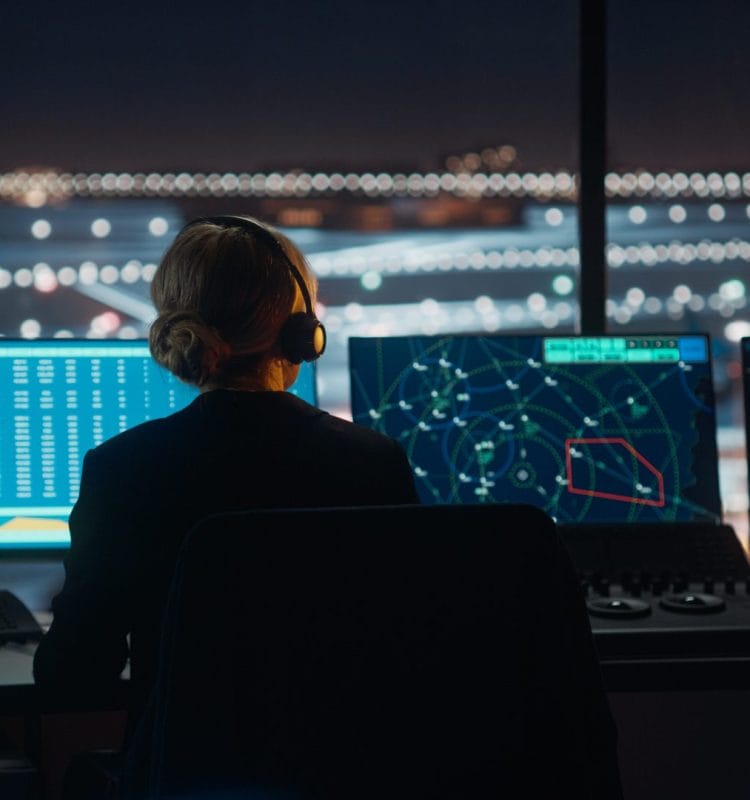EN


As the aviation industry continues to evolve, the quest for safety, efficiency, and precision reaches new heights. While we often hear about advancements in aircraft technology, the role of air traffic control is equally crucial. A little-known but immensely significant component in this arena is eye tracking technology. In this article, we explore how Smart Eye’s cutting-edge eye tracking solutions are reshaping air traffic control and contributing to safer and more efficient skies.
A Critical Link in Aviation: Air Traffic Control
Air traffic controllers are the unsung heroes of aviation, managing the skies, ensuring the safety of flights, and making split-second decisions. Their role is undeniably challenging, requiring a high level of concentration and attention to detail. In such a dynamic environment, even the smallest lapse in judgment can lead to catastrophic consequences.
Smart Eye, renowned for its groundbreaking eye-tracking technology, has extended its influence to the air traffic control sector. Their advanced eye-tracking systems are designed to assist air traffic controllers in performing their duties more effectively and with enhanced safety.
Air traffic controllers are often tasked with monitoring multiple aircraft simultaneously, tracking their positions, altitudes, and ensuring safe separation. Smart Eye’s eye tracking technology helps alleviate the cognitive load on controllers by providing them with a visual overlay of critical information. By following the controller’s gaze, the system can display relevant data, enhancing situational awareness and response times.
Effective communication is paramount in air traffic control. Misunderstandings or miscommunications can lead to potentially disastrous outcomes. Smart Eye’s technology can track the eye movements of both the controller and the pilot, allowing for a more intuitive form of communication. This feature can significantly reduce the chances of errors or misunderstandings in critical instructions.
Smart Eye’s systems also provide real-time feedback to air traffic controllers. By analyzing eye movements and assessing attention levels, it can indicate when a controller might be experiencing fatigue or distraction. This early detection can help prevent potential errors and ensure controllers remain alert and focused.
In addition to real-time assistance, Smart Eye’s technology is instrumental in air traffic controller training. It helps individuals refine their skills by analyzing their gaze patterns and decision-making processes during simulated exercises. Aspiring controllers can receive personalized feedback, while experienced controllers can fine-tune their performance.
In an industry where precision and safety are paramount, Smart Eye’s eye tracking solutions have found an invaluable role in air traffic control. By minimizing cognitive load, enhancing communication, and providing real-time feedback, these systems are changing the way air traffic controllers manage the skies. As air travel continues to grow, innovations like this will be vital in maintaining safety and efficiency in our increasingly crowded skies. Thanks to Smart Eye, air traffic control is gaining new tools to meet the demands of the future.
Interested in learning more about eye tracking? Download our Comprehensive Guide to Eye Tracking Technology for the Aviation Industry here, or contact us today to schedule a demo!

